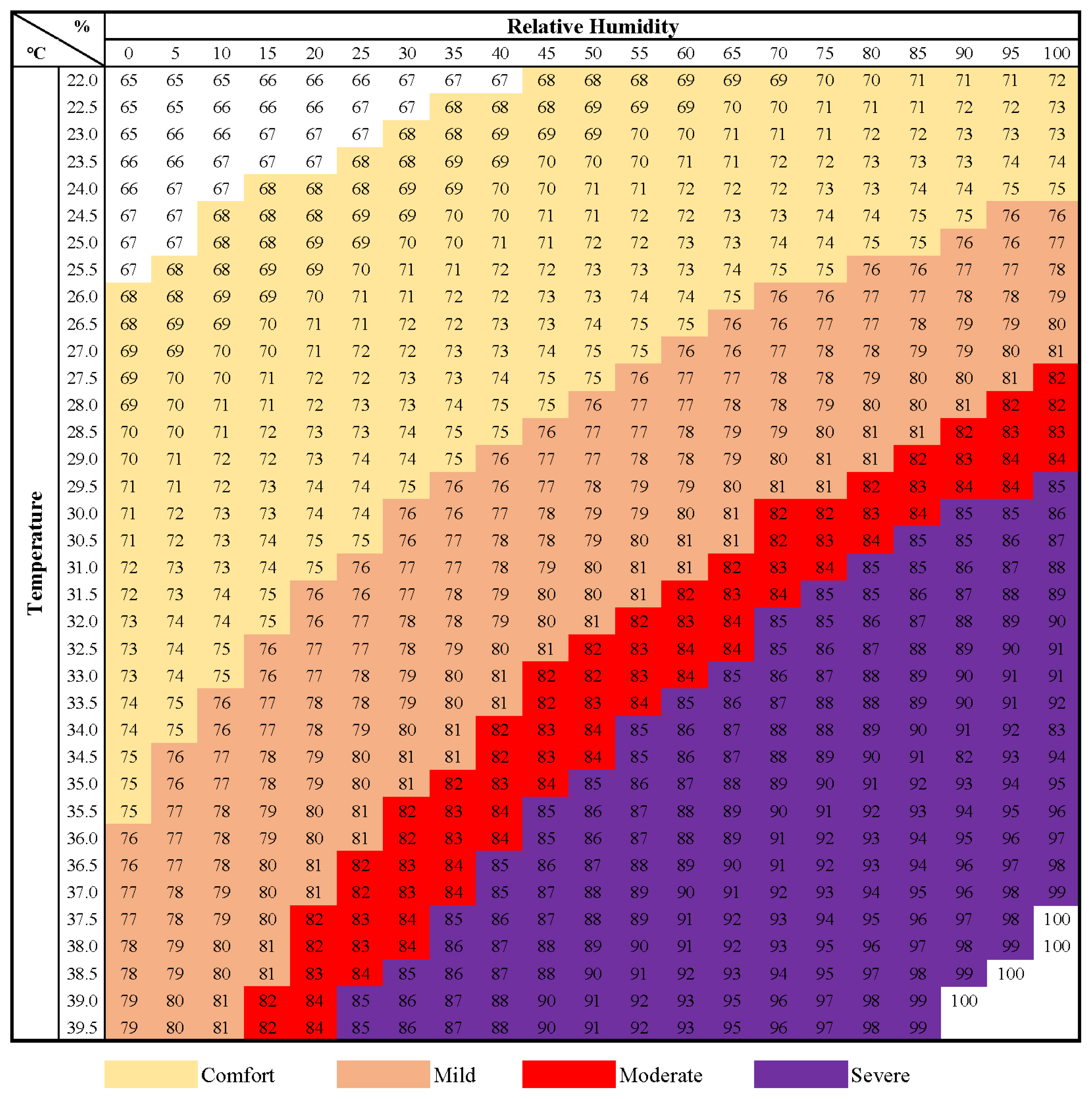1. Intergovermental Panel on Climate Change (IPCC). Mitigation of climate change. Contribution of working group III to the fifth assessment report of the intergovernmental panel on climate change. Cambridge, UK, New York, NY, USA: Cambridge University Press; 2014.
https://doi.org/10.1017/CBO9781107415379

3. Rhoads ML, Rhoads RP, VanBaale MJ, et al. Effects of heat stress and plane of nutrition on lactating Holstein cows: I. Production, metabolism, and aspects of circulating somatotropin. J Dairy Sci 2009; 92:1986–97.
https://doi.org/10.3168/jds.2008-1641


5. Hahn GL. Management and housing of farm animals in hot environments. Boca Raton, FL, USA: CRC Press Inc; 1985. p. 151–74.
8. Committee on Physiological Effects of Environmental Factors on Animals, Natioanl Research Council. A guide to environmental research on animals. Washington, DC, USA: National Academic of Science; 1971.
9. Committee on Nutrient Requirements of Dairy Cattle, National Research Council. Nutrient requirements of dairy cattle. 7th edWashington, DC, USA: National Academies Press; 2001.
10. Subcommitee on Environmental Stress, National Research Council. Effect of environment on nutrient requirements of domestic animals. Washington, DC, USA: National Academies Press; 1981.
11. Kim WS, Lee JS, Jeon SW, et al. Correlation between blood, physiological and behavioral parameters in beef calves under heat stress. Asian-Australas J Anim Sci 2018; 31:919–25.
https://doi.org/10.5713/ajas.17.0545


12. Kim WS, Ghassemi Nejad J, Peng DQ, et al. Identification of heat shock protein gene expression in hair follicles as a novel indicator of heat stress in beef calves. Animal 2020; 14:1502–9.
https://doi.org/10.1017/S1751731120000075


14. Kim WS, Peng DQ, Jo YH, Nejad JG, Lee HG. Responses of beef calves to long-term heat stress exposure by evaluating growth performance, physiological, blood and behavioral parameters. J Therm Biol 2021; 100:103033
https://doi.org/10.1016/j.jtherbio.2021.103033


16. Kang HJ, Piao MY, Lee IK, et al. Effects of ambient temperature and dietary glycerol addition on growth performance, blood parameters and immune cell populations of Korean cattle steers. Asian-Australas J Anim Sci 2017; 30:505–13.
https://doi.org/10.5713/ajas.16.0474


18. National Institute of Animal Science. Korean feeding standard for Hanwoo. 4th edWanju, Korea: 2022.
19. National Institute of Animal Science. Korean feeding standard for Hanwoo. 3rd edWanju, Korea: 2017.
20. Horwitz W, Latimer GW. Official methods of analysis of AOAC International. 21st edGaithersburg, MD, USA: AOAC Interantional; 2019.
21. Kim BG, Stein HH. A spreadsheet program for making a balanced Latin square design. Rev Colomb Cienc Pecu 2009; 22:591–6.
22. Zimbelman RB, Rhoads RP, Rhoads ML, Duff GC, Baumgard LH, Collier RJ. A re-evaluation of the impact of temperature humidity index (THI) and black globe humidity index (BGHI) on milk production in high producing dairy cows. In : Proceedings of the Southwest Nutrition Conference; 2009; p. 158–69.
26. Soriani N, Panella G, Calamari L. Rumination time during the summer season and its relationships with metabolic conditions and milk production. J Dairy Sci 2013; 96:5082–94.
https://doi.org/10.3168/jds.2013-6620


28. Kurihara M, Kume SI, Takahashi S, Aii T. The effect of roughage type and environmental emperature on the energy metabolism of dry dairy cows at maintenance level of feeding. Nihon Chikusan Gakkaiho 1991; 62:375–82.
https://doi.org/10.2508/chikusan.62.375

30. Vizzotto EF, Fischer V, Thaler Neto A, et al. Access to shade changes behavioral and physiological attributes of dairy cows during the hot season in the subtropics. Animal 2015; 9:1559–66.
https://doi.org/10.1017/S1751731115000877


31. Bernabucci U, Lacetera N, Danieli PP, et al. Influence of different periods of exposure to hot environment on rumen function and diet digestibility in sheep. Int J Biometeorol 2009; 53:387–95.
https://doi.org/10.1007/s00484-009-0223-6


32. Zimbelman RB, Baumgard LH, Collier RJ. Effects of encapsulated niacin on evaporative heat loss and body temperature in moderately heat-stressed lactating Holstein cows. J Dairy Sci 2010; 93:2387–94.
https://doi.org/10.3168/jds.2009-2557


33. Abeni F, Calamari L, Stefanini L. Metabolic conditions of lactating Friesian cows during the hot season in the Po valley. 1. Blood indicators of heat stress. Int J Biometeorol 2007; 52:87–96.
https://doi.org/10.1007/s00484-007-0098-3









 PDF Links
PDF Links PubReader
PubReader ePub Link
ePub Link Full text via DOI
Full text via DOI Download Citation
Download Citation Print
Print







